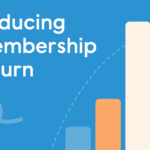Trying to grow your association’s membership? A trial membership can be a smart way to get prospects in the door. It lowers the barrier to entry, lets people explore your value and gives you data on what works. But it also comes with risks: extra admin work, the chance of low conversions and the potential for misuse if you’re not careful.
In this article, we’ll walk through what trial memberships are, the benefits and drawbacks, how to structure them and whether they’re the right move for your association. You’ll also get practical tips for making them work, and a few alternatives if you’re on the fence.
What Are Trial Memberships?
Trial memberships can look different depending on how your association operates. Before weighing the pros and cons, it helps to understand what they are, how they typically work and the main types you’ll see in the membership world.
Definition and How They Work in Associations
A trial membership is a limited-time offer that gives prospective members access to some or all of an association’s benefits without the full cost or commitment. It’s meant to give people a taste of what membership includes, whether that’s exclusive content, community access, events or services.
In trade and professional associations, trial memberships often serve as a recruitment tool. They can be part of a campaign to convert leads, warm up cold contacts or reactivate lapsed members. Some trials are fully open, while others are invite-only. Either way, the goal is the same: show value early and convert users into full, paying members.
Associations handle trial access in different ways. Some require users to sign up through a form. Others use email invites, codes, or CRM-triggered workflows. The structure depends on the tech you use and how tightly you want to control access.
Common Trial Types: Free, Paid, Limited Access
Not all trial memberships are created equal. The most common types include:
- Free trials: These offer either full or partial access at no cost for a short period, usually between 7 and 30 days. They’re low friction but can, unfortunately, attract non-serious users.
- Paid trials: These charge a small fee (usually something like $1 or $5) to weed out unqualified leads. They often result in higher conversion rates.
- Limited-access trials: These give access to only certain content or features, like a sample webinar or resource library, rather than the full experience.
Choosing the right format depends on your audience, your goals and how much you’re willing to give away during the trial period.
The Pros of Trial Memberships
Trial memberships can be a powerful recruitment tool when done right. They lower barriers, show off your value and help you learn what moves people to join. Here’s a closer look at the benefits.
Low-Commitment Entry Point for New Members
One of the biggest benefits of a trial membership is that it reduces friction. People may be curious about your association, but they are hesitant to pay upfront. A trial gives them a way in. No big decision, no pressure. It’s especially useful for early-career professionals or those comparing multiple associations.
A Chance to Show Real Value
It’s one thing to explain what your association offers. It’s another to let people experience it. Trials give prospects direct access to your content, community and support. This lets your value speak for itself. If your programming and benefits are strong, that exposure can do more than any sales pitch could.
Higher Engagement Early On
Trial members are usually more active during the trial period. They’re exploring what you offer and deciding whether or not it’s worth paying for. That window, often just a few weeks, is your best shot to show relevance. If you have strong onboarding and touchpoints in place, you can turn that short-term interest into long-term loyalty.
Better Conversion Insights and Feedback
With the right tracking in place, you can learn a lot from trial behavior. What do people engage with? What’s ignored? Where do they drop off? This kind of feedback helps you refine your membership offer. It also gives you better data on which leads are warm and worth following up with.
Growth Opportunity With Smart Follow-Up
A trial membership eventually ends, but it should lead somewhere. If you build a smart follow-up sequence, you can move many trial users into full membership. That might mean a limited-time discount, a personal email or a nudge with testimonials from current members. If done well, this kind of transition turns curiosity into commitment.
The Cons of Trial Memberships
Trial memberships aren’t a magic fix. Without a clear plan, they can add work, expose your content to misuse, or disappoint both prospects and existing members. Here’s where things can go wrong.
Increased Admin and Resource Load
Even short trials take time to set up and manage. You’ll need a way to register users, grant access, monitor activity and follow up. If your systems aren’t automated, this can quickly become a drain on your team. And if you’re running multiple campaigns, things can get messy without clear workflows.
Risk of Content Misuse or Repeat Signups
Some users may join only to download resources, attend an event, or collect email contacts and then disappear. Or worse, they might try signing up again with a different email. Without the right controls, you risk giving away too much to people who never intended to become members.
Lower Conversions Without a Strategy
A trial membership by itself doesn’t guarantee growth. If you’re not showing the right value at the right time—or if your follow-up is weak—most users will leave when the trial ends. That means time and resources spent with no return. You need a clear strategy for moving people from trial to full member.
Potential Pushback from Current Members
If trial users get access to content or perks that paying members see as exclusive, it can cause friction. Long-time members might feel the value of their dues is being undercut. To avoid that, be clear about what trial members can access and why the full membership still matters.
Are Trial Memberships Right for Your Association?
Trial memberships aren’t one-size-fits-all. They can work well for some associations and fall flat for others. Before launching one, take a step back and look at your goals, resources and audience.
Evaluate Your Goals, Resources and Capacity
Start with what you’re trying to accomplish. Do you want to grow overall membership? Increase awareness in a specific segment? Re-engage lapsed members? A trial can help with all of those, but only if you have the staff, tools, and time to run it well. If your team is already stretched thin, it might create more problems than it solves.
Consider Your Audience and Offer Type
Think about who you’re trying to reach. A trial membership may appeal to younger professionals, freelancers or those exploring a new industry. But it might not work for senior-level execs or long-time members of another association. Also consider whether a free, paid or limited-access trial fits best with their expectations and your capacity.
Know What You’ll Include—and What You’ll Hold Back
You don’t have to give away everything. In fact, holding back some member-only perks can help reinforce the value of upgrading. Maybe trial users can view webinars but not download slides. Or they can access community forums but not vote in board elections. Decide in advance what’s fair and what’s off-limits.
How To Structure a Trial Membership Program
Once you’ve decided to offer a trial membership, the next step is figuring out how to set it up. The details, like how long it lasts, what it includes, and how people move from trial to paid, can make or break its success.
Choose the Right Duration
Short trials (3-7 days) create urgency but may not give enough time to explore your offerings. Longer trials (30 days or more) offer a better experience but risk losing momentum. Somewhere in the 7-14 day range often works best for associations, as it gives trial users time to engage without dragging things out.
Free vs. Paid Trials: What’s the Difference?
Free trials are easier to promote and remove friction completely, but they also attract more casual users. Paid trials, usually at a small fee, can help qualify leads. People who are willing to pay even a little are more likely to convert. Some associations test both to see which brings in more committed members.
Set Expectations Up Front
Make it clear what users get during the trial. Be transparent about how long it lasts, what content or features they can access and what happens when it ends. If people feel misled or confused, it damages trust, which in turn hurts conversions.
Build a Clear Path from Trial to Full Member
Don’t leave trial users hanging. Plan your follow-up while the trial is still active. Send reminders as the end date approaches, highlight benefits they haven’t tried yet and explain what’s waiting for them as full members. Make upgrading easy, with a clear call to action and a simple payment process.
Alternatives to Trial Memberships
Trial memberships aren’t the only way to give potential members a preview of what you offer. If you’re not ready to commit to a full trial program or want other ways to test interest, these options can help.
“Behind-the-Scenes” Preview Videos
Show what membership looks like without giving access. Record short videos of your member portal, an event in action or interviews with active members. This gives prospects a feel for your community and content without opening the doors.
Limited-Time Guest Passes
Instead of offering full trials, you could try guest passes to specific events or webinars. This approach keeps your broader benefits exclusive but still offers a taste. It’s especially useful for conferences, networking events or online meetups.
Free Content or Intro-Level Access
Offer a curated selection of resources, like one downloadable guide, an article series or a short course. Make it useful enough to show value, but limited enough to leave them wanting more. This works well as a lead magnet tied to a broader marketing funnel.
Consultation or Discovery Calls
For smaller, more targeted groups, a short call can be more effective than a generic trial. It’s personal, lets you tailor your pitch, and helps build a real connection. This works best for associations with high-ticket memberships or more specialized audiences.
Is a Trial Membership the Right Move?
Trial memberships can be a great way to attract new members, but only if they’re done with a clear goal and strategy. They lower the entry barrier, give people a real taste of what you offer and help you learn what drives conversions. But they also come with trade-offs: more admin work, potential misuse and the risk of low return without a plan.
If your association has the resources to run a structured trial—with onboarding, clear boundaries and smart follow-up—it can pay off. If not, you might want to start with one of the alternatives and test interest that way.
Thinking about launching a trial membership or wondering if it’s the right strategy for your association? MemberClicks helps associations like yours onboard new members, track engagement and turn interest into long-term retention. Let’s talk about how we can support your growth!
















